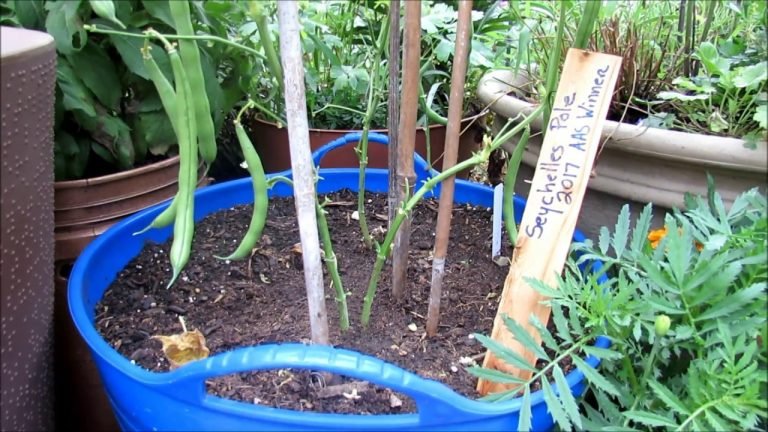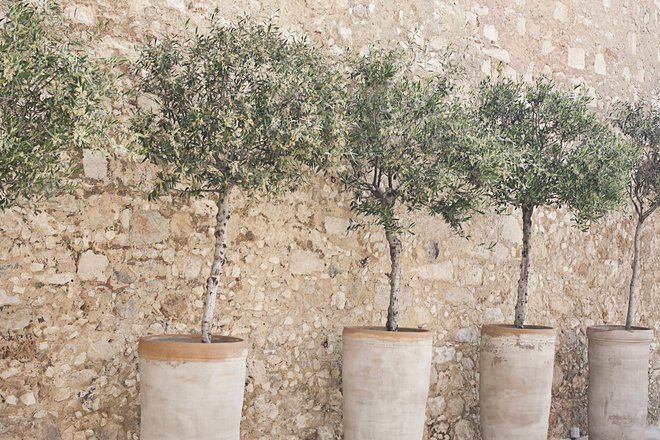how to grow romaine lettuce in a pot – [Beginners Guide]
Growing your own produce can be a fun and rewarding experience. If you have a small space or just want to try growing your own food, growing romaine lettuce in a pot is a great option. I have been growing my own lettuce in pots for a few years now and it has been a wonderful experience.
Not only does it provide you with fresh greens for your salads, but it also gives you a sense of satisfaction and helps to reduce your carbon footprint by reducing the need for long-distance transportation of produce. Plus, growing lettuce in pots is incredibly easy and low-maintenance, making it a great option for those who are new to gardening or have limited time to tend to their plants.
So, if you’re ready to give growing your own romaine lettuce a try, read on!
Pot or container selection
To grow romaine lettuce at home, a minimum pot size of 6 inches in diameter and 6 inches in depth is recommended. The capacity of the pot should be at least 1 gallon to allow enough room for the roots to grow and develop properly.
The pot construction should be made of a durable and porous material, such as terra cotta, which allows excess water to drain and the soil to breathe. Avoid using plastic pots, as they can retain too much moisture and lead to root rot.
It’s also important to choose a pot with good drainage holes to prevent water from standing and causing root rot. If your pot does not have adequate drainage holes, you can drill some or add rocks at the bottom to improve water flow.
In conclusion, when growing romaine lettuce at home, select a pot that is at least 6 inches in diameter and 6 inches in depth, with a capacity of 1 gallon or more. Choose a pot made of a durable and porous material, such as terra cotta, with good drainage holes for optimal growth.
Make suitable soil mix
The type of soil mix needed to grow romaine lettuce at home is a well-draining and nutrient-rich soil. The ideal soil mixture for growing lettuce should be composed of 1/3 garden soil, 1/3 compost, and 1/3 perlite or vermiculite to ensure adequate drainage and provide the necessary nutrients for healthy growth.
Correct soil composition is essential for optimal growth of romaine lettuce as the soil provides the necessary nutrients and water to the roots. If the soil is too heavy and does not drain well, the roots can become waterlogged and may develop root rot. On the other hand, if the soil is too light and does not retain moisture, the lettuce will not receive enough water to grow properly.
It’s also important to make sure the soil is pH balanced, with a pH level between 6.0 and 6.8, as lettuce prefers slightly acidic soil. You can adjust the pH level of your soil by adding lime or sulfur as needed.
In conclusion, when growing romaine lettuce at home, use a soil mix that is well-draining and nutrient-rich, consisting of 1/3 garden soil, 1/3 compost, and 1/3 perlite or vermiculite. Ensure the soil is pH balanced with a pH level between 6.0 and 6.8 for optimal growth.
How to plant the romaine lettuce?
Growing romaine lettuce at home in a pot is a simple and rewarding process. Here is a step-by-step guide to help you get started:
- Prepare the pot: Choose a pot with good drainage and a capacity of at least 1 gallon. Fill the bottom of the pot with a layer of rocks or broken pieces of terra cotta to improve drainage.
- Mix the soil: Mix together 1/3 garden soil, 1/3 compost, and 1/3 perlite or vermiculite to create a well-draining and nutrient-rich soil mix.
- Fill the pot with soil: Fill the pot with the soil mix, leaving 2 inches of space at the top.
- Plant the lettuce seeds: Sow the lettuce seeds on top of the soil, spacing them about 1 inch apart. Cover the seeds with a thin layer of soil.
- Water the seeds: Gently water the seeds until the soil is evenly moist. Do not overwater, as this can cause the seeds to rot.
- Place the pot in the sun: Place the pot in a sunny location, such as a windowsill or outdoor patio, where it will receive at least 6 hours of direct sunlight per day.
- Keep the soil moist: Keep the soil moist but not waterlogged. Check the soil moisture level regularly and water as needed to keep it evenly moist.
In conclusion, growing romaine lettuce at home in a pot is a simple and straightforward process. By following these steps, you can grow healthy and delicious lettuce in the comfort of your own home.
How to care for romaine lettuce?
Watering Requirements:
Proper watering is essential for the health and growth of romaine lettuce in a pot. Here are some tips for watering your lettuce:
- Moist soil: Keep the soil evenly moist, but not waterlogged. Overwatering can cause the roots to rot, while under-watering can cause the lettuce to wilt or bolt (go to seed).
- Frequency: Water your lettuce regularly, checking the soil moisture level every few days. In general, lettuce plants need about 1 inch of water per week.
- Method: Water the lettuce at the base of the plant, avoiding getting water on the leaves. This will help prevent disease and keep the leaves from becoming too wet.
Fertilizer Requirements:
Fertilizing your romaine lettuce will help ensure healthy growth and a bountiful harvest. Here are some tips for fertilizing your lettuce:
- Compost: Use a compost-rich soil mix to provide your lettuce with the necessary nutrients.
- Liquid fertilizer: You can also use a liquid fertilizer every 2-3 weeks, following the manufacturer’s instructions for dilution and application.
- Type: Choose a fertilizer high in nitrogen, such as a 5-10-5 fertilizer, as lettuce is a heavy feeder and requires a lot of nitrogen for healthy growth.
Sunlight Needs:
Romaine lettuce needs plenty of sunlight to grow properly. Here are some tips for providing your lettuce with adequate sunlight:
- Location: Place the pot in a sunny location, such as a windowsill or outdoor patio, where it will receive at least 6 hours of direct sunlight per day.
- Shade: If the sun is too intense, you can provide some shade by placing a sheer curtain or shade cloth over the pot.
Pruning & Training:
Pruning and training your romaine lettuce will help promote healthy growth and increase the size of your harvest. Here are some tips for pruning and training your lettuce:
- Pinching: Pinch off the growing tips of the lettuce when they reach 4-6 inches tall. This will encourage the plant to branch out and produce more leaves.
- Thinning: Thin the seedlings to one plant per 3-4 inches of pot width, removing the weaker seedlings and leaving the stronger ones to grow.
- Staking: If your lettuce is growing tall and leggy, you can stake it to help keep it upright.
In conclusion, growing romaine lettuce at home in a pot requires proper care to ensure healthy growth and a bountiful harvest. By following these tips for watering, fertilizing, providing sunlight, pruning and training,
Common problems
Pests:
There are several common pests that can attack romaine lettuce grown in a pot. These include:
- Aphids: These small insects suck the sap from the lettuce leaves, causing them to yellow and deform.
- Slugs: Slugs can damage the lettuce leaves by eating holes in them.
- Cutworms: Cutworms can cut the lettuce stem at the base, causing the plant to die.
Diseases:
There are several diseases that can affect romaine lettuce grown in a pot. These include:
- Downy mildew: This disease causes yellow spots on the upper side of the leaves and a white, downy growth on the underside of the leaves.
- Bacterial leaf spot: This disease causes small, brown, water-soaked spots on the leaves.
- Root rot: Overwatering can cause the roots of the lettuce to rot, leading to stunted growth and yellowing leaves.
Poor Production:
There are several reasons why romaine lettuce grown in a pot may not produce well. These include:
- Lack of sunlight: Romaine lettuce needs at least 6 hours of direct sunlight per day to grow well. If it is not getting enough sunlight, it will become leggy and produce few leaves.
- Overcrowding: If there are too many plants growing in the same pot, they will compete for sunlight, water, and nutrients, leading to poor production.
- Inadequate nutrients: A soil mix that is lacking in nutrients can cause the lettuce to grow slowly and produce few leaves.
In conclusion, there are several common problems that can affect romaine lettuce grown in a pot at home. By being aware of these issues and taking the appropriate measures to prevent or treat them, you can ensure that your lettuce grows well and produces a bountiful harvest.
Harvesting & storing homegrown romaine lettuce
Harvesting Homegrown Romaine Lettuce
- Romaine lettuce is ready for harvesting when the leaves are full and the head is firm to the touch.
- For maximum flavor, it’s best to harvest in the morning or in the cooler part of the day.
- Cut the entire head of lettuce at the base of the plant with a sharp knife or scissors.
Storing Homegrown Romaine Lettuce
- Wash and dry the lettuce leaves thoroughly to remove any dirt or debris.
- Store in an airtight container or plastic bag, with a damp cloth or paper towel to maintain moisture.
- Place in the refrigerator and consume within a week for best taste and freshness.
Note: For best results, harvest and store lettuce as soon as possible after picking to ensure maximum freshness and taste. Also, be careful not to damage the remaining leaves of the plant, as this can reduce the yield for future harvests.
Growing romaine lettuce in container – Conclusion
Conclusion: Growing Romaine Lettuce in a Pot
Growing romaine lettuce in a pot is an easy and convenient way to have fresh, healthy greens at your fingertips. By following the simple steps outlined in this guide, you’ll be on your way to growing a successful crop in no time.
Benefits of Growing Lettuce at Home:
- Fresh and tasty greens anytime
- Control over the quality of your produce
- Opportunity to grow a variety of lettuce that may not be available in stores
- Cost-effective alternative to buying store-bought greens
With just a few basic supplies and some patience, you can have a thriving lettuce garden right on your windowsill. Give it a try and enjoy the benefits of homegrown greens all year round!








